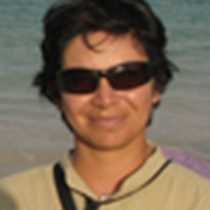We entered the western realm of the Galapagos archipelago early this morning, and by breakfast time National Geographic Endeavour II anchored at Punta Espinoza on Fernandina Island.
Fernandina is the youngest island in the archipelago and is perhaps the best place to find large clusters of Galapagos marine iguanas, several of which were found this morning, ranging from a few dozen iguanas up to several hundred. As we walked by, some of these iguanas began to walk to the water to feed on the algae that was exposed by the low tide.
Along national park trails we found Galapagos sea lions, some sleeping, others feeding their young, and on a small sandy spot we saw a very young pup. By the size and dark color of its fur, it looked to me that it was less than a month old. The female sea lions go out fishing and their young will stay ashore until these pups start catching fish on their own.
At the end of the morning we returned onboard and went snorkeling from our Zodiacs in deep waters. We had great conditions to snorkel in these cool, rich, productive waters; several guests found green sea turtles, others found Galapagos marine iguanas feeding underwater, and many different types of fish.
This afternoon we went to the northwestern region of Isabela Island, where we went on a Zodiac ride along the coast and found the endemic Galapagos penguin, Galapagos flightless cormorant, brown pelicans, and marine iguanas. One of the highlights of this place were the green sea turtles, this area seems to be a very important feeding area and around Isabela Island we have some of the most important nesting sites for this species of reptile.
Towards the end of the afternoon, we crossed the equator line and had a fun ceremony, great weather and excellent wine to celebrate the crossing.







